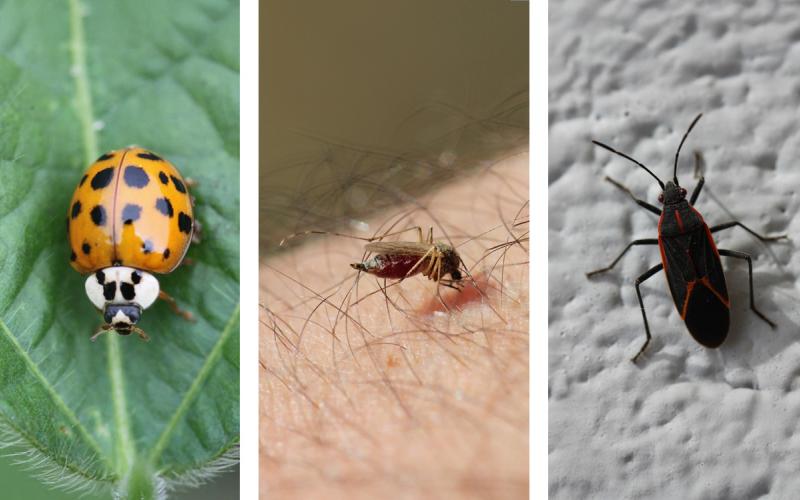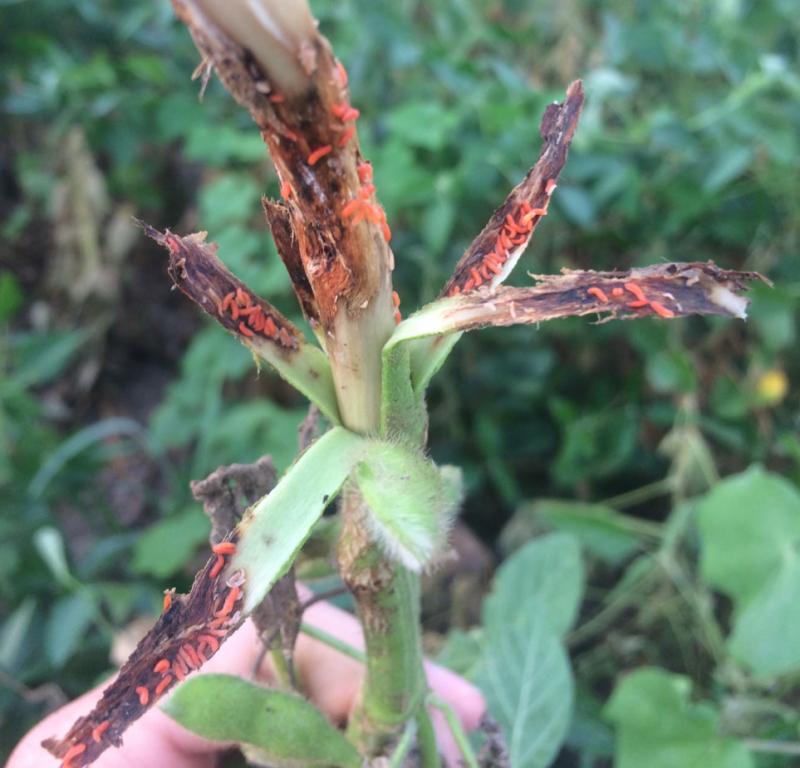
Written collaboratively by Adam Varenhorst, Philip Rozeboom, Amanda Bachmann, Patrick Wagner, Jakob Hicks, and Cole Dierks.
In 2018, South Dakota soybean farmers were faced with a new soybean insect pest. What started with dying field borders ultimately ended with yield losses throughout many fields on the Eastern side of the state. We determined that the pest in question was the soybean gall midge. Soybean gall midge infestations were confirmed in Brookings, Clark, Clay, Codington, Davison, Deuel, Douglas, Edmunds, Hamlin, Hanson, Hutchinson, Kingsbury, Lincoln, Miner, Moody, Spink, Turner and Union counties. Typically, the most severe infestations were observed in the southeast counties, which is likely due to earlier infestation dates. Observed yield loss was greatest at the field edges, with as high as 100% yield loss reported 20-100+ feet into the field. Additionally, field averages of 50% yield loss were reported in areas where severe infestations were observed.
Symptoms of Infestation
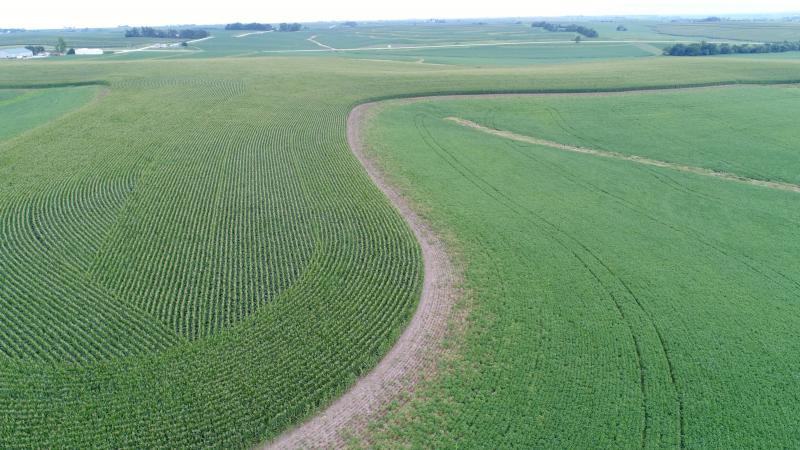
Soybean gall midge are small, orange to red colored maggots that are found directly under the soybean epidermis near the base of the plants (Figure 1).
Infested fields generally had an obvious area of dead plants starting at the edge of the field (Figure 2).
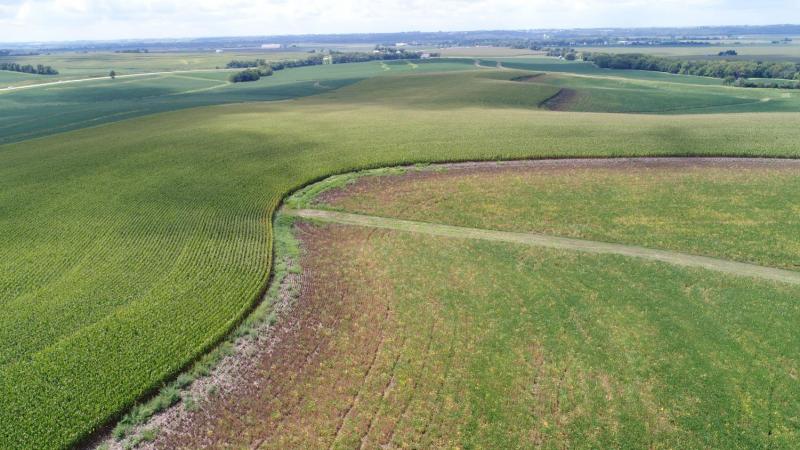
As the season progressed, the gradient of dead plants spread towards the center of the field (Figure 3). However, some infested fields were asymptomatic or had symptoms of drought stress until much later in the season.
We noticed that infested plants are prone to lodging and numerous reports of field edge lodging were received during the fall of 2018.
Regional Research
Farmers in Iowa, Minnesota and Nebraska were also negatively affected by soybean gall midge in 2018. Due to the multistate infestation, researchers in each state are collaborating to provide a regional approach to this emerging pest. The combined survey efforts in 2018 found infested fields in a total of 66 counties across Iowa, Nebraska, Minnesota and South Dakota (Figure 4).
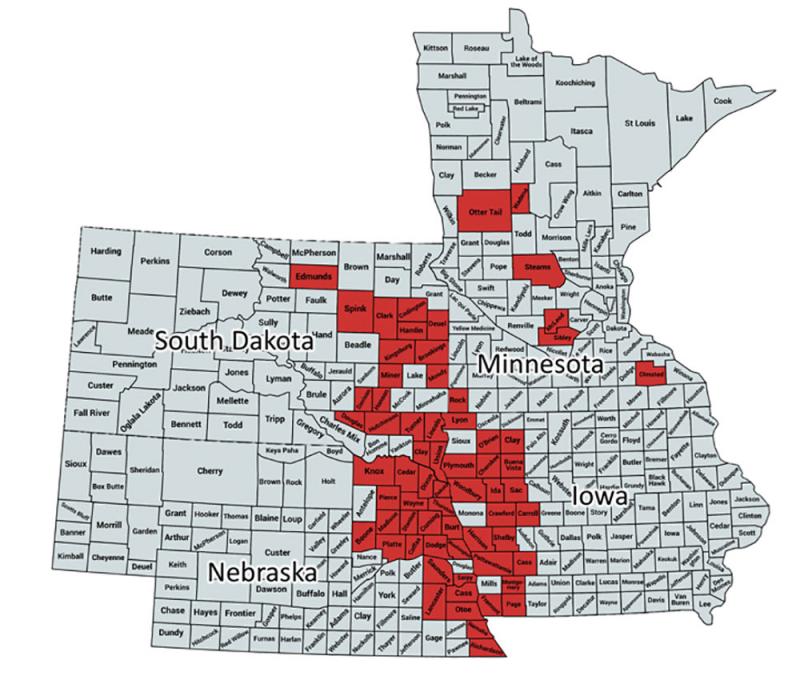
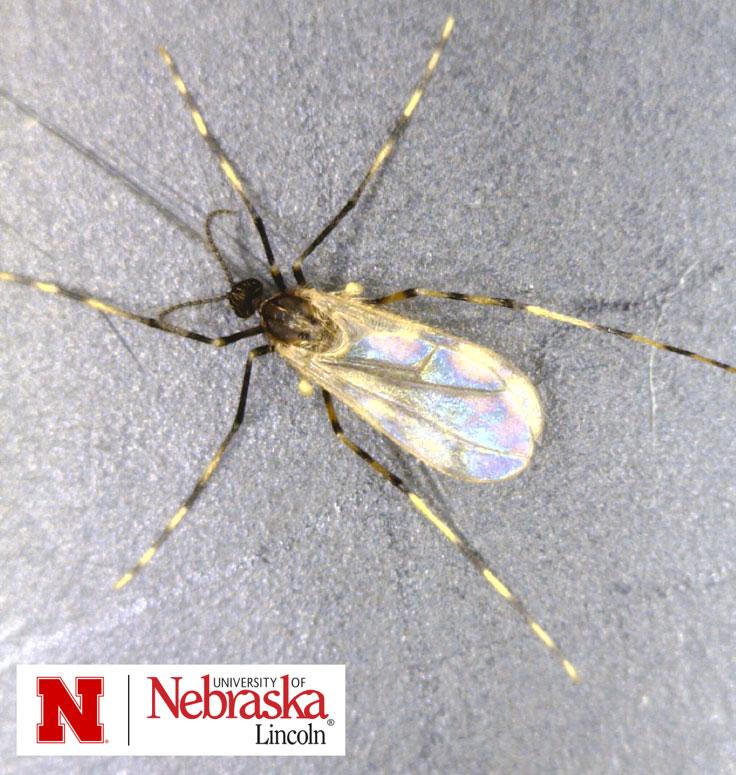
Dr. Justin McMechan (University of Nebraska) collected numerous samples of small adult flies that emerged from infested soybean plants (Figure 5). The samples were sent to two of the leading authorities in midge identification. They determined that the flies belonged to the genus Resseliella and confirmed that they were the adults for the small maggots observed under the epidermis of the soybean plants. Worldwide, there are 55 species in the genus Resseliella and only 15 species have been identified in the United States. The confirmation of the adults will allow researchers to determine the emergence timing of the soybean gall midge for each state, which will be used for a targeted management approach.
2019 Strategy
In 2019, we will be evaluating management strategies for soybean gall midge larvae. However, at this time there are no management recommendations for this pest. There was limited evidence in 2018 that foliar edge insecticide applications reduced infestation rates. Without emergence date information for soybean gall midge, a targeted application can’t be done, meaning that multiple applications would be necessary to possibly reduce adult movement. For this reason, we are not recommending foliar insecticide treatments to reduce soybean gall midge in 2019. There is also evidence that a slightly later planting date may reduce infestation rates. For those that were severely affected in 2018, we recommend rotating fields and potentially planting 1-2 weeks later than normal.
If you have yield data you would like to share or would like to be involved in the 2019 studies please email Adam Varenhorst.


